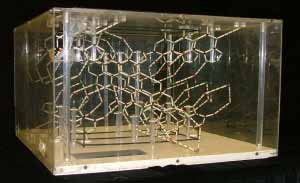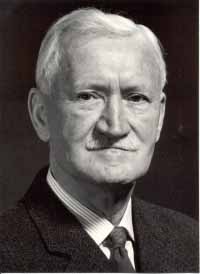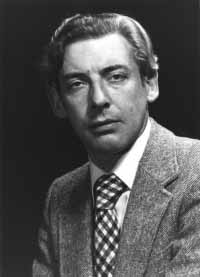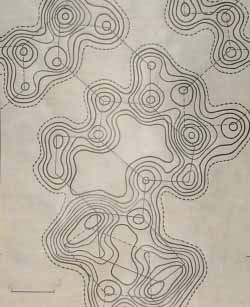DNA: the Dundee Connection
 Watson & Crick Model of the Chemical Structure of DNA, 1959 |
In 1953 two scientists at the University of Cambridge (James Watson and Francis Crick) announced their identification of the structure of DNA, the blueprint for life itself. Watson went on to become the first leader of the Human Genome Project to map and sequence every human gene. This hugely ambitious project was largely completed in 2003, and was hailed as one of the most remarkable achievements in the history of science. In the 1950s and 60s the University of Dundee (then Queen's College Dundee) was home to some little known but vital research carried out by staff in the departments of Physics and Chemistry. Using innovative techniques of molecular modelling and X-ray diffraction, their work was crucial in determining some of the component parts of DNA. This webpage uses images from the University's museum and archive collections to tell their story. |
|
Born in 1929, Herbert Wilson studied at the University of Wales where he specialised in X-ray diffraction. In 1952 he won a fellowship to King's College London, where he collaborated with Maurice Wilkins on the crucial X-ray diffraction studies of DNA which identified its spiralling shape and proved a vital catalyst to Watson & Crick's 1953 discovery. Wilson came to Dundee in 1957 as Lecturer in Physics, becoming Senior Lecturer in 1964 and Reader in 1973. Together, Wilson and John Iball carried out ground-breaking work on X-ray crystallography, much of which was related to DNA. In 1983 Wilson left Dundee to take up a chair at Stirling University. He died in 2008. |
 Dr Herbert Wilson (Archive Services) |

Model of the Molecular Structure of Guanine Hydrochloride Dihydrate, c.1963 |
This model was constructed by John Iball and Herbert Wilson, who were the first to determine the dimensions of the guanine molecule (one of the component parts of DNA) using X-ray diffraction. |
|
Born in 1907, John Iball began his interest in X-ray crystallography at the Royal Institution in London in the 1930s, studying under Sir William Bragg, the founder of modern crystallography in Britain. In 1948 he came to Dundee, where he was to remain for the rest of his life. Although initially appointed to the Physics department, in 1957 he transferred to Chemistry, where he was worked until his retiral in 1974. He was made Professor in 1969, and died in 1993. |
 Prof John Iball (Archive Services) |

Leeds Weissenberg Camera |
This camera was purchased by John Iball in 1950 for macro-molecular photography, and was used in the Chemistry department up to 1998. It was designed in Leeds by Professor Ernest Cox, and was a significant development on the original Weissenberg camera invented in the 1920s. With equipment like this, Iball was quick to establish Dundee as a leading centre for X-ray crystallography. |
|
This model was assembled for use by Dr Pat Tollin, who was using sperm whale myoglobin (whose molecular structure he had studied with research student Jenny Gorski) to test a molecular modelling system he was developing. The work had significant implications for the X-ray crystallography research of Tollin's colleagues John Iball and Herbert Wilson. |

Model of the Molecular Structure of Sperm Whale Myoglobin, c.1966 |
 Dr Pat Tollin (Archive Services) |
 Electron density map of a steroid hormone by John Iball |